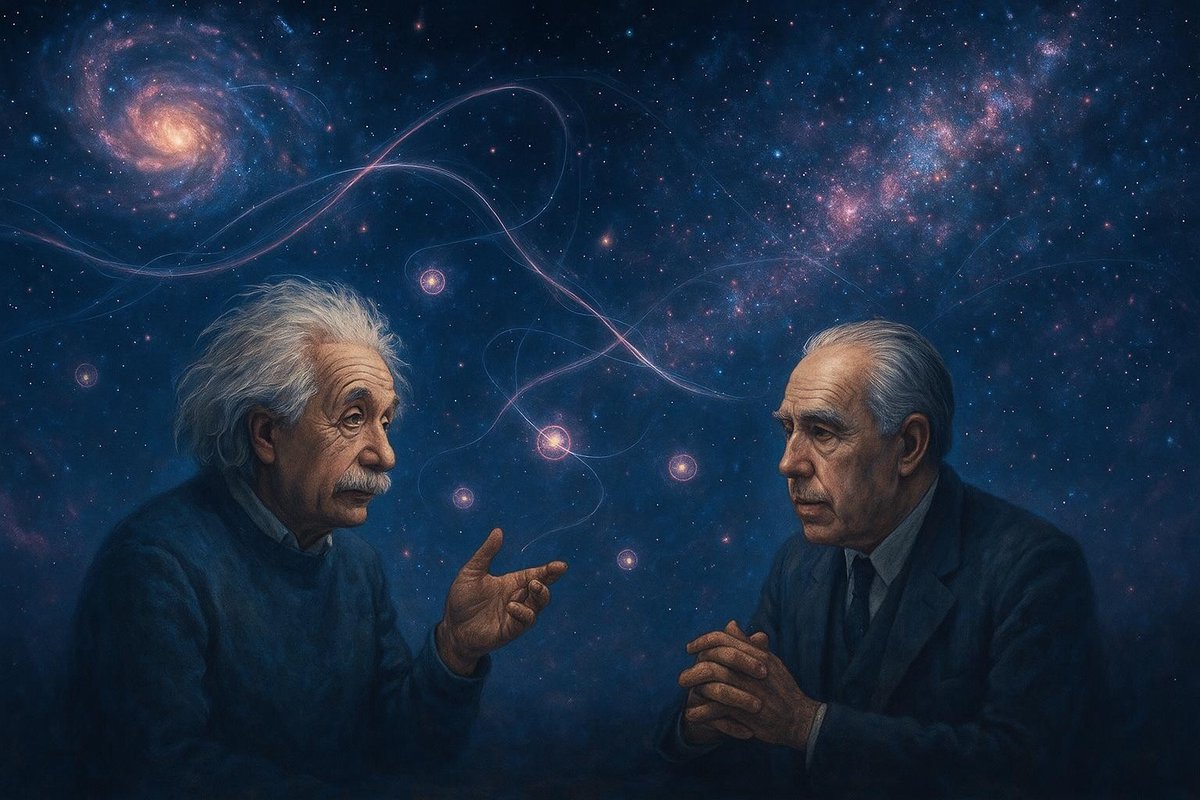
Unpacking the Question
What is quantum entanglement, and how does it relate to human relationships? At first glance, this might seem like an odd pairing. Yet, the comparison offers intriguing insights into the fabric of reality and the connections we share with others. Quantum entanglement is a phenomenon where two particles become interconnected, regardless of the distance separating them. This bond is so profound that changes to one particle instantly influence the other, a concept Albert Einstein famously dismissed as “spooky action at a distance.” But what if this spookiness mirrors the way humans feel connected, even over vast distances?
- Entangled particles behave as if they are one, no matter the distance.
- Human relationships often exhibit a similar kind of non-physical connection.
- Both concepts challenge our understanding of separate entities.
Before the advent of quantum mechanics, classical physics dominated, emphasizing isolated, deterministic objects. But this view fell short in explaining the mysteries of the quantum world, just as surface-level interpretations of human connections often miss deeper undercurrents.
Surprising Facts
The discovery of quantum entanglement in the early 20th century revolutionized our understanding of the universe. In 1935, Einstein, Podolsky, and Rosen proposed the EPR paradox to challenge the completeness of quantum mechanics. Yet, later experiments, like those of John Bell in the 1960s, demonstrated entanglement’s reality. This shook the scientific community, demanding a reevaluation of what we considered possible.
- Bell’s Theorem confirmed that entangled particles are interdependent.
- Experiments showed instantaneous effects across vast distances.
- Quantum teleportation is a real, albeit complex, concept based on entanglement.
Interestingly, quantum entanglement underscores the impossibility of fully isolating any part of our universe. As humans, we often realize that despite physical separation, emotional and psychological bonds remain robust. Both entanglement and human relationships debunk the myth of complete independence, inviting us to reconsider what connection truly means.
What Science Says
The science of quantum entanglement is as enigmatic as it is compelling. It suggests that at a fundamental level, the universe is a web of interactions, weaving together the fabric of reality. Experiments have repeatedly shown that entangled particles behave as a single system, defying classical intuitions.
- Entangled particles exhibit correlated properties, even when separated.
- Measurements on one particle affect the state of its entangled partner.
- Quantum mechanics challenges the classical notion of locality.
From a scientific perspective, entanglement reveals a universe where separateness is an illusion. Similarly, human relationships often defy physical boundaries, illustrating an intricate web of emotional and psychological ties. Embracing this parallel invites us to view the universe—and our connections—through a lens that transcends mere physicality.
What It Means for Us
So, what can quantum entanglement teach us about human relationships? It offers a potent metaphor for the unseen bonds that link us to each other. Just as entangled particles remain interconnected regardless of distance, many people believe that human connections also transcend time and space.
- Emotional ties often persist despite physical separation.
- Interpersonal connections can resemble quantum interdependencies.
- Both remind us of the universe’s inherent interconnectedness.
Interestingly, this perspective challenges the notion of individuality by highlighting the interconnected nature of existence. As time goes on, our understanding of relationships—both quantum and human—continues to evolve, urging us to embrace the mysterious and the interconnected.
Fuel Someone Else’s Curiosity
Share this article with friends who ponder the mysteries of the universe and the depths of human connection. As we unravel the hidden threads that bind us, let’s inspire each other to explore the profound links between science, philosophy, and the human experience. Let’s keep the conversation alive, for in the dance of particles and people, we might find the secrets to a more connected future.

Leave a Reply